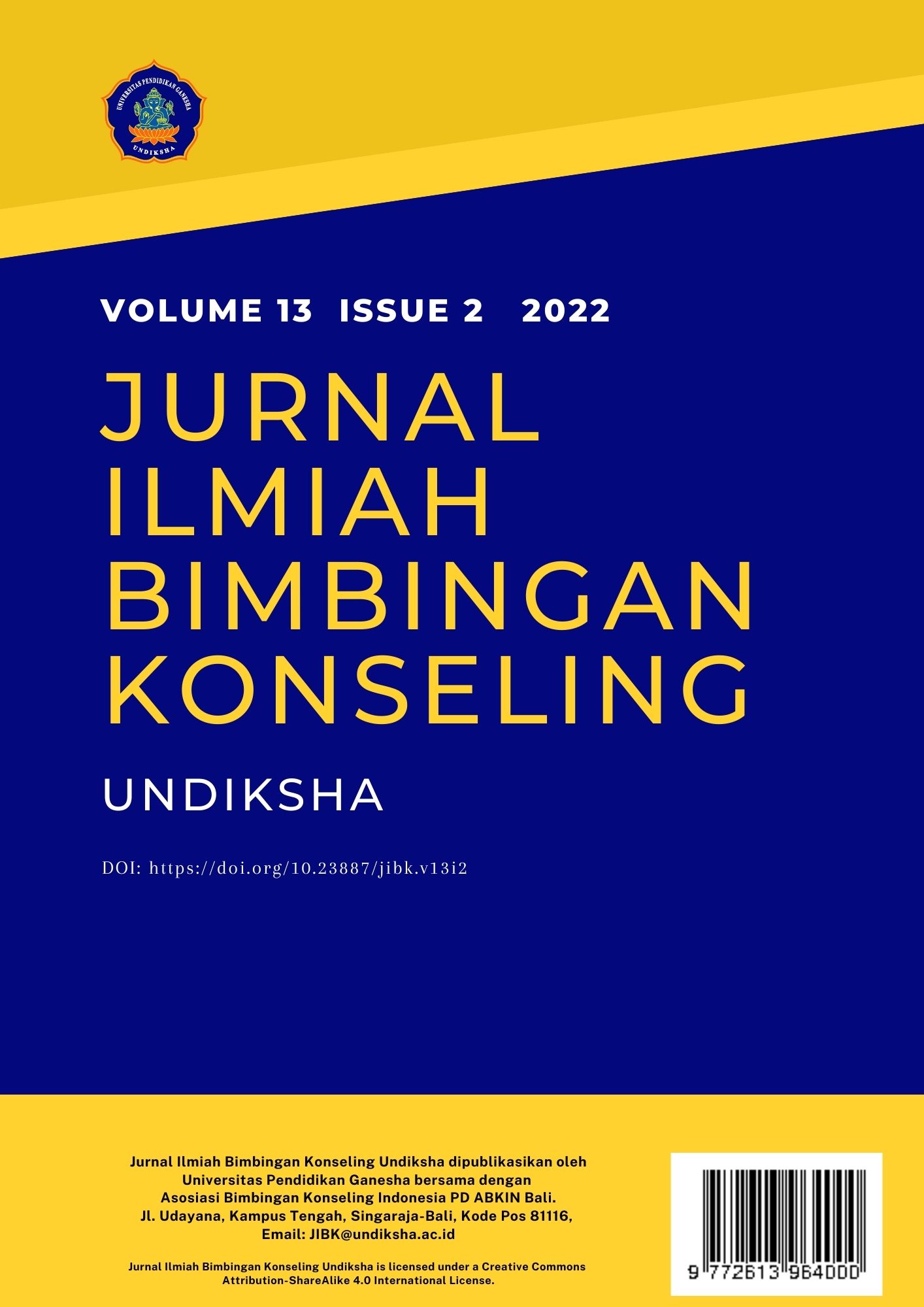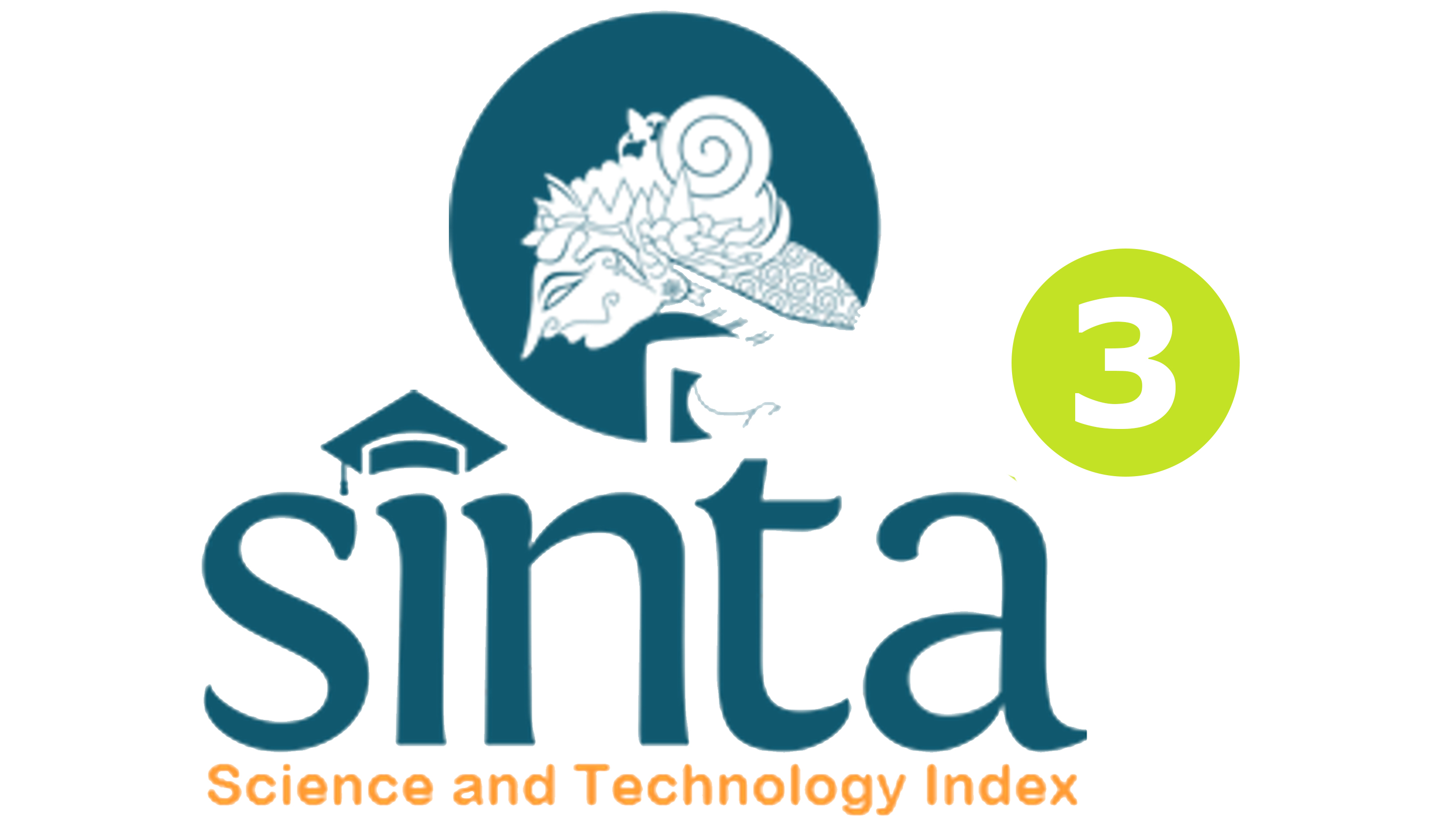Hubungan Self Efficacy dengan Critical Thinking pada Mahasiswa
DOI:
https://doi.org/10.23887/jibk.v13i2.35711Keywords:
Self-efficacy, Critical thinking, MahasiswaAbstract
This study uses a quantitative method with correlational testing which aims to determine the relationship between self-efficacy and critical thinking of students of the Faculty of Psychology. In this study using 2 measuring instruments. First, general self-efficacy (GSE) developed by Schwarzer and Jerusalem based on Bandura's theory and the second using the Critical Thinking Dispotision Self Rating Form by Peter Facione. The sampling technique used in this study was a nonprobability sampling technique, namely purposive sampling. The total sample is as many as 55 students. Based on the results of data analysis, that there is a significant positive relationship between self-efficacy and critical thinking, it means that the higher the student's self-efficacy, the higher the students' critical thinking. Thus, the hypothesis of this study is accepted. The results of this study can be used as material to develop student self-efficacy, so that students' critical thinking skills also increase.
Abstrak:
Penelitian ini menggunakan metode kuantitatif dengan teknik pengujian korelasional yang bertujuan untuk mengetahui hubungan antara self efficacy dan critical thingking mahasiswa fakultas Psikologi. Pada penelitian ini menggunakan 2 alat ukur. Pertama, general self efficacy (GSE) yang dikembangkan oleh Schwarzer dan Jerusalem berdasarkan teori Bandura dan yang kedua menggunakan Critical Thinking Dispotision Self Rating Form oleh Peter Facione. Teknik pengambilan sampel yang digunakan dalam penelitian ini menggunakan teknik nonprobability sampling yaitu Purposive sampling. Keseluruhan sampel tersebut adalah sebanyak 55 mahasiswa. Berdasarkan hasil analisis data, bahwa terdapat hubungan positif yang signifikan antara self efficacy dan critical thinking, berarti semakin tinggi self efficacy yang dimiliki mahasiwa maka critical thingking yang dimiliki mahasiswa pun akan meningkat. Dengan demikian hipotesa penelitian ini terbukti. Hasil penelitian ini dapat digunakan sebagai bahan acuan mengembangkan self efficacy mahasiswa, agar kemampuan berpikir kritis (critical thinking) yang dimiliki mahasiwa juga semakin meningkat.
References
Azwar, S. (2012). Reliabilitas dan validitas. Yogyakarta: Pustaka Pelajar.
Bandura, A. (1989). Self-efficacy mechanism in physiological activation and health-promoting behavior. New York: Raven.
Beyer, B., K. (1995). Critical thinking. Bloomington IN: Phi Delta Kappa Educational Foundation.
Dewey, J. (1910). How we think. Boston; D.C. Health and Co. DOI: https://doi.org/10.1037/10903-000
Ennis, R.H. (2000). Goals for a critical thinking curriculum & its assessment. In A.L. Costa, (Ed), Developing minds: A resource book for teaching thinking (pp. 44– 46). Alexandria, VA: Association for Supervision and Curriculum Development, Alexandria, Virginia.
Facione, P., A. (2011). Critical thinking: What It Is and Why It Counts.
Gist, M., E. (1987). Self-efficacy: implication for organizational behavior and human resource management. Academy of management review, 12(3), 472-485. DOI: https://doi.org/10.5465/amr.1987.4306562
Debra, M., G. (2007). Developing thinking developing learning. British journal of educational studies, 55(4), 644-648
Hitchcock, D. (2018). Critical thinking. The stanford encyclopedia of philosophy.
Dehghan, M., Sani, H., & Malekzadeh, A. (2011). Relationship between students critical thinking and self-efficacy beliefs in Ferdowsi University of Mashhad, Iran. Journal Procedia Socialand Behavioral Sciences, 15, 2952–2955. DOI: https://doi.org/10.1016/j.sbspro.2011.04.221
Nurazizah, S., & Nurjaman, A. (2018). Analisis hubungan self efficacy terhadap kemampuan berpikir kritis matematis siswa pada materi lingkaran. Jurnal Pembelajaran Matematika Inovatif, 1(3), 361-370 DOI: https://doi.org/10.22460/jpmi.v1i3.p361-370
Rubenfeld, M., G., & Scheffer, B., K. (2007). Berpikir kritis dalam keperawatan. Jakarta: EGC.
Santrock, J., W. (2007). Adolescent. New York: McGraw-Hill.
Schwarzer, R., & Matthias, J. (1995). English version: general self-efficacy scale. DOI: https://doi.org/10.1037/t00393-000
Sugiyono. (2017). Metode penelitian kuantitatif kualitatif dan R&D. Bandung: ALFABETA
Suparni. (2016). Upaya meningkatkan kemampuan berfikir kritis mahasiswa menggunakan bahan ajar berbasis intergrasi interkoneksi. Jurnal Derifat, 3(2), 40-58 DOI: https://doi.org/10.31316/j.derivat.v3i2.716
Sundari, P., D., Parno, Kusairi S. (2016). Hubungan antara efikasi diri dan kemampuan berpikir kritis siswa. Pros. Semnas Pend. IPA Pascasarjana UM, 1, 405-415
Tabrizi, A., R., N., & Jafari, M. (2015). The relationship among critical thinking, self efficacy, and iranian EFL learners reading comprehension ability with different proficiency levels. Journal of Academic Research International, 6(2), 19-27
Downloads
Published
Issue
Section
License
Copyright (c) 2022 Natalia Salea, Christiana Hari Soetjiningsih

This work is licensed under a Creative Commons Attribution 4.0 International License.
Jurnal Ilmiah Bimbingan Konseling Undiksha is an Open Access Journal. The authors who publish the manuscript in this journal agree to the following terms:
JIBK is licensed under a Creative Commons Attribution 4.0 International License. This permits anyone to copy, redistribute, remix, transmit and adapt the work provided the original work and source is appropriately cited.
This means:
Jurnal Ilmiah Bimbingan Konseling is licensed under a Creative Commons Attribution 4.0 International License.
(1) Under the CC-BY license, authors retain ownership of the copyright for their article, but authors grant others permission to use the content of publications in JIBK in whole or in part provided that the original work is properly cited. Users (redistributors) of JIBK are required to cite the original source, including the author's names, JIBK as the initial source of publication, year of publication, volume number, issue, and Digital Object Identifier (DOI); (2) The authors are the copyright owner of the article, and the author grants the JIBK held the first publication right.









.png)

.jpg)
